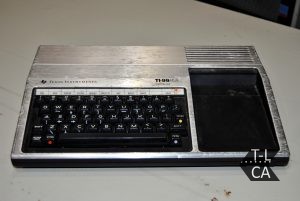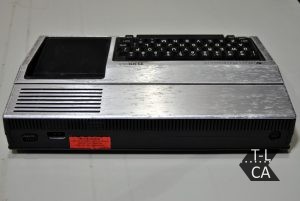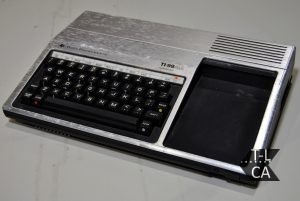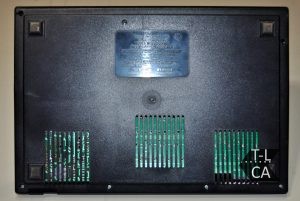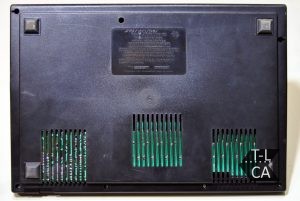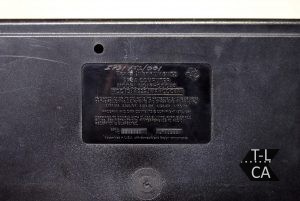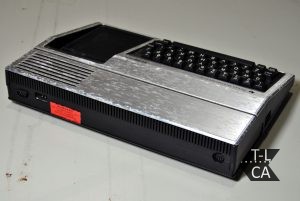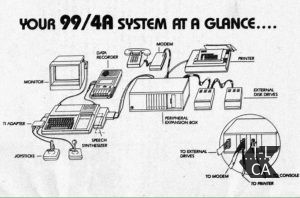Texas Instruments 99/4A released in June 1981 is not your typical home 8-bit computer. It is in fact the worlds first 16-bit home computer. This little computer also boasted dedicated hardware sprite support, 4-channel sound and bitmap mode graphics. The cartridge allowed 38k ROM to be inserted. Built-in languages included TI BASIC, TI Extended BASIC, TI LOGO II, UCSD Pascal, TI FORTH, TI PILOT, TMS 9900 Assembly Language.
Due to a lack of 3rd party support, sales of the computer were poor. The games market drove 8-bit home computers over lesser-suppoerted 16 bit machines, and production was stopped in March 1984.
The machines had am impressive 192×256 16-color video mode, a 32×24 character text mode using the TMS9918 Video Chip, and a four-channel sound chip. However while the CPU was 16-bit, the RAM was 8-bit. A 16-to-8 multiplexer was used, requiring 2 clock cycles to transfer data, halving the data rate on both read and write to the RAM. The off-chip register design impeded the speed further.
TI also built a large collection of pheripherals for the computer. These included a voice synthersiser, TI adaptor for joysticks, Pheripheral expansion box, to which you could connect a Modem, External disk drives and Printer. A monitor (as opposed to TV) could also be connected to the console.
TI was also developing a Hex-Bus. This was a high-speed serial link designed to connect to many pheripheral devices, the same idea that USB is based on. It was never commercially released.
When TI decided to design a home computer, they alread had two projects running. One department was developing a computer game console. The other was developing a personal computer. The departments were merged and produced the TI-99/4 (and thus later the 4A). This computer was neither suitable as a game console nor a personal computer. Only about 100 games were produced for the computer, nearly all by TI. Compared with the Sinclair spectrum’s 1700+ available games.
The original price of $525 which is $1,500 in 2020 (£1,200) in 1981 had been slashed to $50 in 1984 as poor sales forced it off the market. Saying that, 2.8 Million units were sold. Wikipedia notes a US$330 million loss in the third quarter of 1983 – that is $857 Million in 2020 (£700 Million).
| Year | 1981 |
| Make & Model | Texas Instruments 99/4A |
| Generation | 4th |
| CPU | TMS9900 |
| Speed | 3MHz |
| RAM & ROM | 16k RAM, expandable to 48k 256-bytes CPU scratchpad RAM 34k ROM, expandable to 72k |
| Power | 9V AC |
| Exhibit No. | 1349 |

